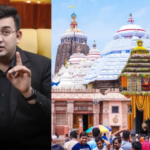Centre to begin population census in 2025, with Lok Sabha delimitation exercise set for 2028
NEW DELHI, OCT 28 : The Narendra Modi-led NDA government is set to begin the long-delayed population census in 2025, with a target for completion by 2026. This will be followed by a nationwide delimitation process for Lok Sabha constituencies, expected to be finished by 2028.
A government source told TNIE that preparations are underway to initiate the deccanial census—excluding the caste census—in 2025, aiming to deprive the opposition from raising issues related to it ahead of assembly polls in states like Bihar and others.
Sources further hinted that the census was proposed to be started in 2021, but it couldn’t be conducted due to the outbreak of the second wave of the COVID-19 pandemic in the country.
The country’s last decennial population census was conducted in 2011; thereafter, no census was held, although demands for it continued from various political parties throughout the time. The Congress-led opposition had intensified its criticism of the Modi government, particularly over the issue of a caste census.
Sources suggest that a caste census is unlikely, with the government expected to proceed with the national census instead.
This census aims to provide data on population growth, development indices, and other factors essential for long-term planning and effective governance. The government is developing a plan to mobilise a large workforce to complete the census within a specified timeframe.
Notably, India has conducted the census every 10 years since 1881. India’s population was 121.1 crore based on the last census held in 2011.
The first phase of this decade’s census was expected to begin on April 1, 2020, but had to be postponed due to the COVID-19 pandemic.
Between 2011 and now, the United Nations projected in an April 2023 report that India had surpassed China for the first time to become the world’s most populous country, with an estimated population of over 142 crore (1,425,775,850).
“The data on the national census will be in the public domain by 2026 as the census will be conducted in a mission mode,” a senior source in the government remarked, adding that the delimitation process of LS constituencies will follow the national census across the country.
Meanwhile, those within the political circles suggest that the delimitation process for Lok Sabha constituencies will increase the number of seats in certain states and adjust the boundaries of existing constituencies based on population distributions.
“The delimitation process of Lok Sabha constituencies is all set to be completed a year before the next LS election due in 2029, said a source.
Delimitation means the act or process of fixing limits or boundaries of territorial constituencies in a country or a province having a legislative body. The job of delimitation is assigned to a high-powered body. The body is known as the Delimitation Commission or a Boundary Commission.
In India, such Delimitation Commissions have been constituted four times: in 1952 under the Delimitation Commission Act, 1952; in 1963 under the Delimitation Commission Act, 1962; in 1973 under the Delimitation Act, 1972 and in 2002 under the Delimitation Act, 2002.
In the past several leaders from south Indian states have expressed concern that due to the huge population of North India, they will get more seats, and states that controlled the population would lose out with under-representation.
The data from 2011 censusAccording to the 2011 Census of India, the total population was 1.21 billion or 121.1 crore, with males constituting 51.5% (623.2 million or 62.32 crore) and females 48.5% (587.7 million or 58.77 crore).
Uttar Pradesh, with a population of 199.5 million (19.95 crore), was the most populous state, followed by Maharashtra with 112 million (11.2 crore). Sikkim, with a population of 610,577 (6.11 lakh), was the least populous state.
Bihar had the highest population density, while Arunachal Pradesh had the lowest. Lakshadweep had the smallest population among union territories. Kerala had the highest sex ratio and literacy rate, whereas Haryana had the lowest sex ratio and Bihar had the lowest literacy rate.
India’s population increased by over 181 million (18.1 crore) from 2001 to 2011, representing a growth rate of 17.64%. Males grew by 17.19%, and females by 18.12%.
In the 2011 census, 31.2% of the population lived in urban areas (377.1 million or 37.71 crore), and 68.8% resided in rural areas (833.8 million or 83.38 crore). Additionally, 453.6 million (45.36 crore) people, or 37.8% of the total population, were classified as migrants.
The religious composition in 2011 was as follows: Hindus made up 79.8% (964.6 million or 96.46 crore), Muslims 14.2% (172.2 million or 17.22 crore), Christians 2.3% (27.8 million or 2.78 crore), Sikhs 1.7% (20.8 million or 2.08 crore), Buddhists 0.7% (8.4 million or 84 lakh), Jains 0.4% (4.5 million or 45 lakh), and other religions 0.9% (10.9 million or 1.09 crore).
The percentage decadal growth rates for the six most populous states declined from 1991-2001 to 2001-2011: Uttar Pradesh fell from 25.85% to 20.09%, Maharashtra from 22.73% to 15.99%, Bihar from 28.62% to 25.07%, West Bengal from 17.77% to 13.93%, Andhra Pradesh from 14.59% to 11.10%, and Madhya Pradesh from 24.26% to 20.30%.
-PTI





